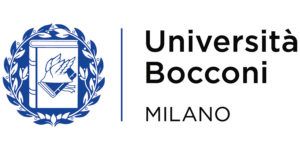SAT ENGLISH: THE READING AND WRITING EXAM
Don’t make the mistake to believe the SAT English aka the Reading and Writing SAT exam, has anything to do with a test you’re used to. You won’t find a use of English or a listening test here. The Reading and Writing is a complex test of language skills. Learn about its structure, the types of questions, what concepts are evaluated, the most significant changes introduced on the Digital SAT for the Reading and Writing and tips on how to approach this section.
Table of Contents
SAT Reading and Writing Structure
The SAT Reading and Writing (R&W) test consists of 2 modules or sections, each containing 27 questions that you must answer in a time limit of 32 minutes. In other words, the Reading and Writing section consists of 54 questions for which you have 64 minutes to answer and for which you are eligible for a score of between 200 and 800 points.
The first R&W module is common to all candidates in terms of difficulty level. That is to say, the questions will not be exactly the same, but the level of complexity will be the same.
The second module depends on your resolution of the first module. For instance, depending on whether you pass a certain number of correct questions or not, you will be given the upper module or not. The upper module consists of more difficult questions but also gives higher scores for the same number of correct answers. You can visit the link for SAT score additional information.
Types of SAT Reading and Writing Questions
Unlike the math test, the Reading and Writing exam only has multiple-choice questions. All questions consist of 4 options of which only one is correct. It is important to remember that on the SAT, incorrect answers on the multiple-choice test will not penalize your score.

Contact EPIC PREP and Discover Why We Have Been Delivering Successful Results Since 2010
Concepts Tested
It is important to understand that the Reading and Writing portion of the SAT is not like the Cambridge English exams you may be used to. As a student, you may have taken English as a foreign language proficiency tests, but the SAT tests advanced language skills.
Remember that it is a test designed to assess the language skills of American high school students, so an advanced level of English is taken for granted as a necessary requirement. After preparing thousands of students, we can guarantee that a good level of English is a prerequisite. In other words, a good level of English does not guarantee you a good Reading and Writing grade, but a low level of English is a guarantee of absolute failure.
The Reading and Writing exam evaluates different linguistic aspects. The main categories, in order of importance, are:
- Vocabulary within a context
- Rhetorical purpose
- Command of Evidence
- Use of punctuation marks
- Transition words
There are, between categories and subcategories, 28 elements. The above are the main ones but they are not the only ones. It is very important that if you want to be competitive on the SAT you understand and master all of the content categories tested on the Reading and Writing test.
Significant Changes in Digital SAT Reading and Writing
The Digital SAT has made significant changes to the test. Not only has the test been changed, but significant structural changes have also been introduced. The main changes affecting the Reading and Writing Exam:
- There are no longer two tests: in the paper-based SAT there were 3 tests. The Reading, Writing and Math tests. With the arrival of the Digital SAT, the structure has been simplified and Reading and Writing are evaluated in a single exam.
- The resolution times per question have been modified: The paper-based SAT times were 48 seconds per question for Writing and 75 seconds per question for Reading. On average for both tests on the paper SAT you had 62.5 seconds per question. The resolution times per question for the Reading and Writing on the Digital SAT are close to 72 seconds.
- The total number of questions has decreased: The paper-based SAT had 52 questions on the Reading Exam and 44 on the Writing Exam. The total number of questions for what was known as Evidence Based Reading and Writing was 96 questions. Currently the Reading and Writing of the digital SAT has a total of 54 questions spread over 2 modules of 27 each.
- The structure of the Reading test has undergone drastic changes: there were 5 long passages of 500 to 700 words each and 10+11 questions had to be answered per passage. This made reading times in English very difficult for non-native speakers to cope with. Now you will be faced with single paragraphs of 100 to 150 words each with only one question to answer per paragraph.

Tell Us What Score You Need and We Help You Obtaining It
SAT Reading and Writing Resolution
The SAT requires more than mere participation. It involves competing not only with yourself, but also with the millions of test takers each year. Keep in mind that the primary purpose of a standardized test is to rank all candidates, providing institutions with a benchmark for comparison. Adopt this mindset when approaching SAT reading and writing test preparation.
As for how to approach it, it is critical to break it down into:
- Pre-test preparation process:
- Organize your preparation logically: the SAT is not like getting your driver’s license. Simply taking the tests is insufficient without a solid understanding of the linguistic concepts that will be tested. Remember that the number of questions is unlimited, especially in the age we are heading towards, in which machines can generate infinite combinations.
- Practice relentlessly: Although it may seem contradictory to the previous point, it is not. To build a solid foundation, you need to deeply assimilate the concepts and practice them thoroughly. Keep in mind that every fraction of a second you beat the clock can make a significant difference in your final performance.
- Master the most common grammar rules: It is essential to know how to use punctuation properly. For example, students should know thoroughly the differences among periods, semi-colons, colons, and dashes. Additionally, students should get highly comfortable with all the different transition words.
- Considerations for the day of the exam:
- Don’t obsess over unanswered questions: Remember that each module of the Reading and Writing exam consists of 27 questions. You are not obliged to answer them in the order they appear. If you read a question and in the first 5 seconds realize you don’t know the answer, mark it for later. The Bluebook allows you to bookmark questions to go back and review them before completing the module.
- Know how to use the Bluebook: Solve at least one complete Reading and Writing test using the Bluebook. You can’t afford any surprises on test day.
- Decide how to manage your time: Be aware that a clock will appear on the screen. You have the option to hide it or leave it visible. Before you start the exam, determine whether having the clock will help or penalize you based on your personality. If it does not create stress for you, it can be a valuable tool. However, if it can negatively affect your performance, hide it and turn it on periodically.
Hopefully this blog post has resolved all your doubts. However, if you have questions in regards to your SAT preparation, get in touch and we will let you know how EPIC PREP can help you achieve your goals. Differently, if you prefer to continue reading here is the link to our SAT courses page.








